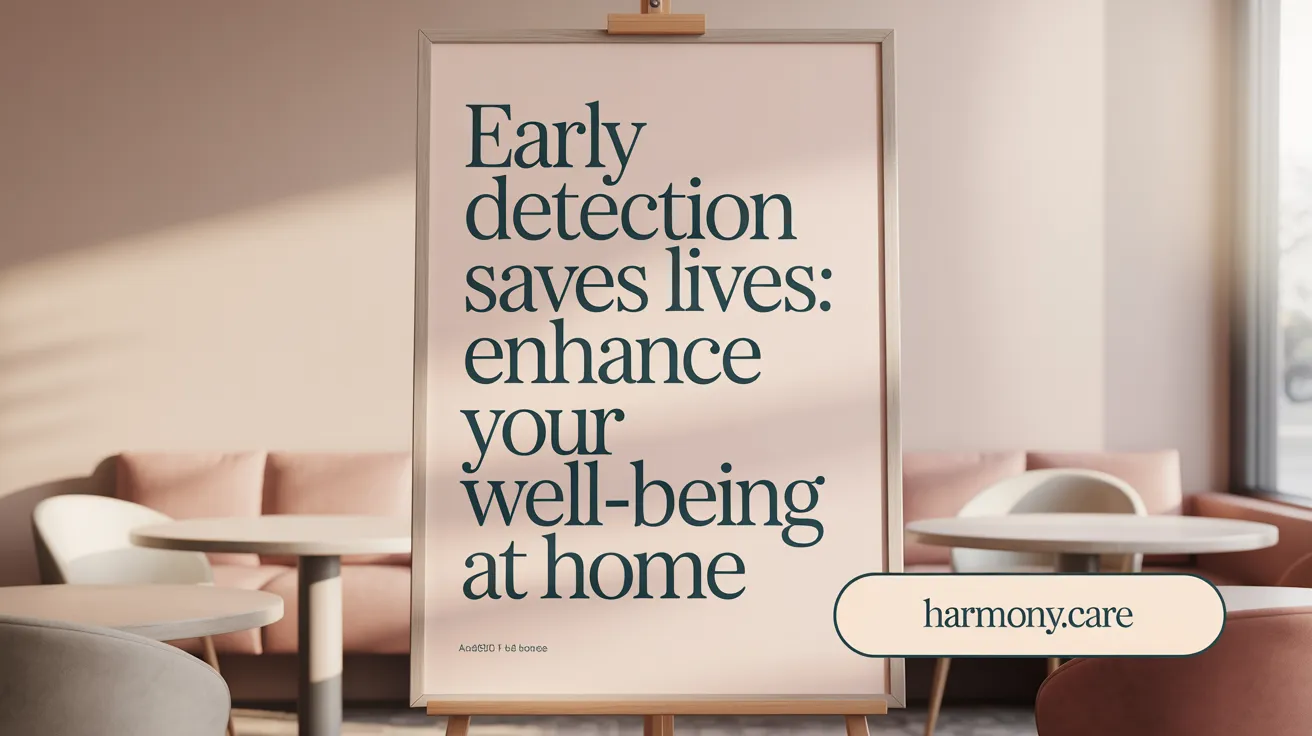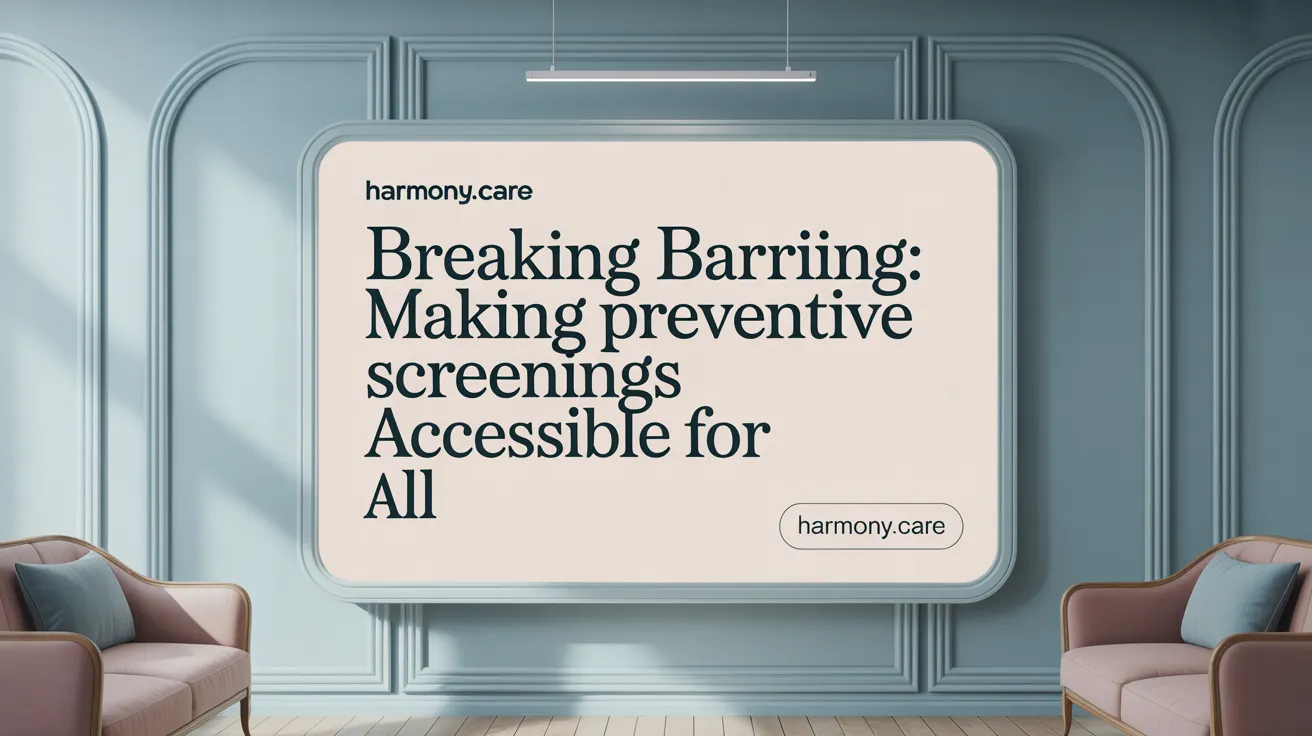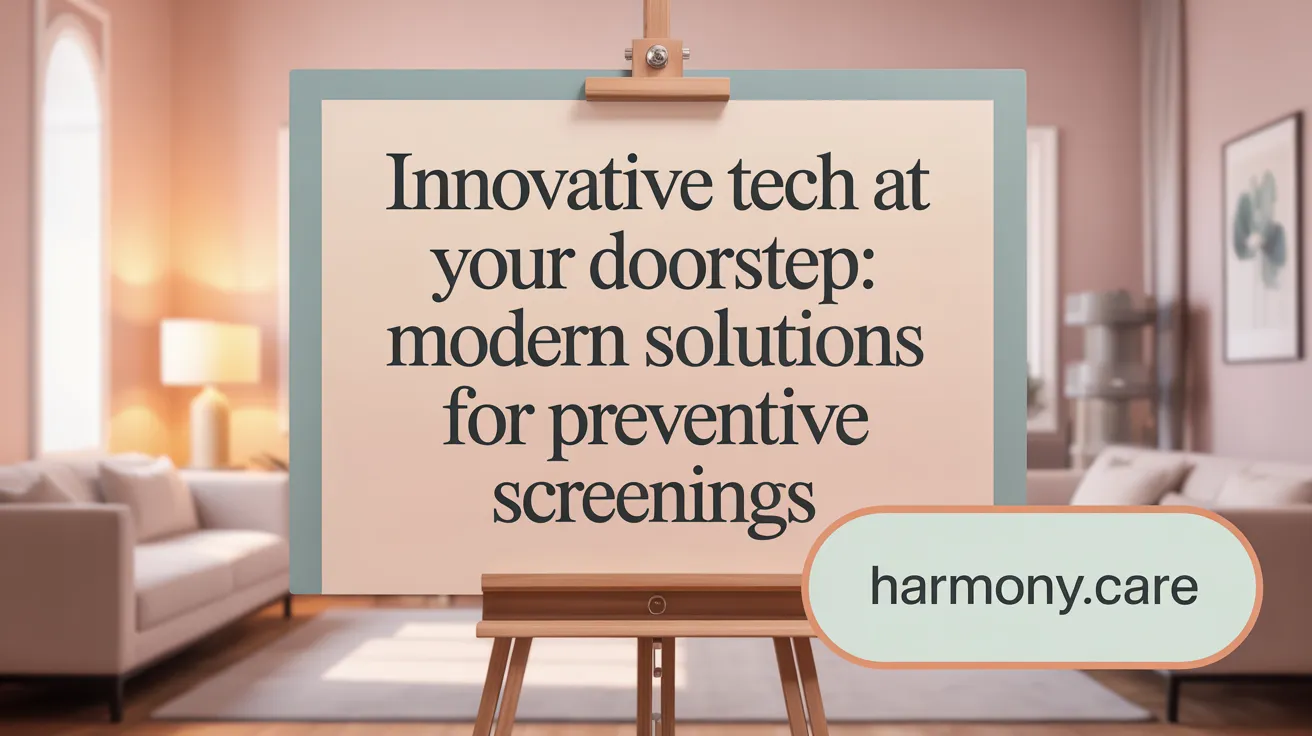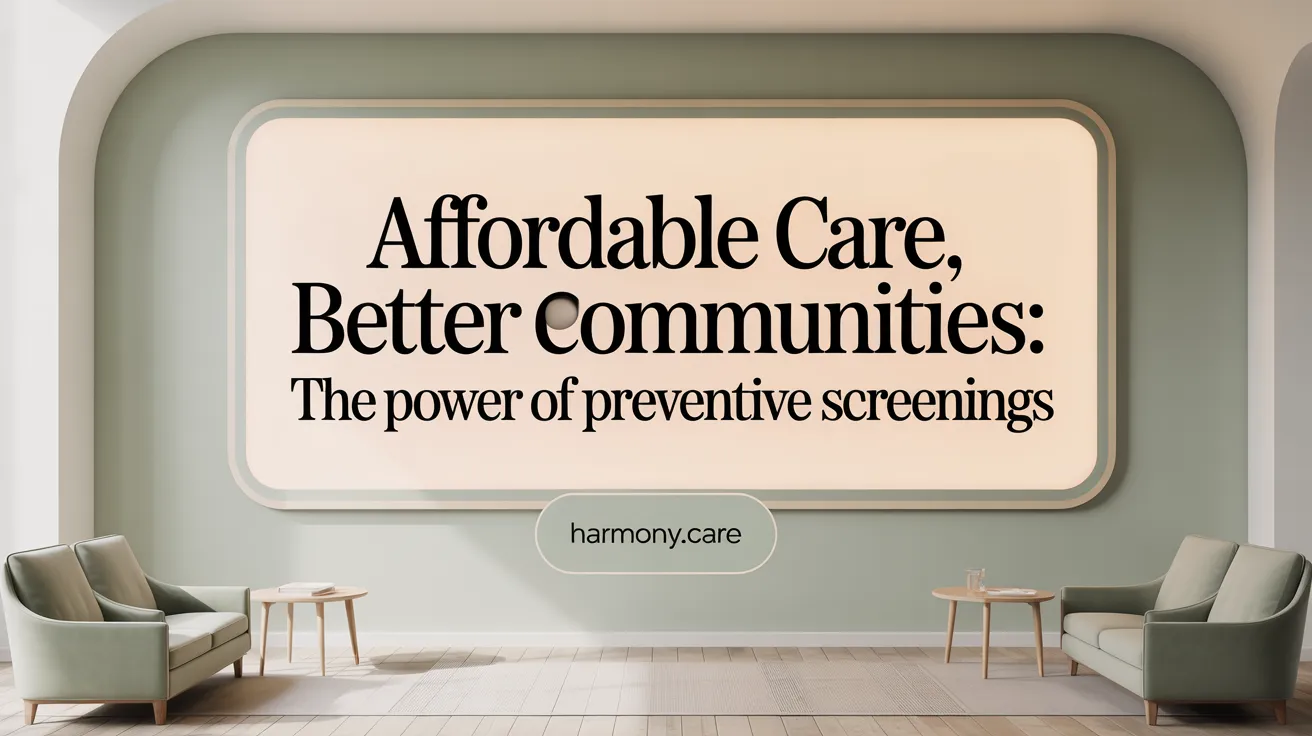Embracing Prevention in Home-Based Healthcare
Preventive screenings are transforming home-based healthcare by enabling early detection, reducing hospitalizations, and promoting healthier aging. As healthcare shifts from reactive treatment to proactive management, integrating preventive screenings into home health services emerges as a powerful strategy to improve safety, health outcomes, and overall well-being for diverse populations, especially seniors and individuals with chronic conditions.
The Critical Role of Preventive Screenings in Enhancing Health Outcomes at Home

How do preventive screenings contribute to health outcomes and safety in home-based healthcare?
Preventive screenings are essential tools in home care settings for identifying health issues early. They include tests for blood pressure, cholesterol, blood glucose, and screenings for cancers such as colorectal or breast cancer. Detecting these conditions before symptoms appear allows for timely medical intervention, which can prevent disease progression and reduce complications.
Early detection through screenings helps improve health outcomes by enabling patients to manage chronic diseases like diabetes and hypertension more effectively. It also decreases the likelihood of hospitalizations caused by preventable crises such as strokes, heart attacks, or uncontrolled blood sugar levels.
Safety is significantly enhanced by screenings that reveal risk factors for falls or other accidents. For instance, vision impairments or unaddressed medication side effects identified during routine tests can be managed proactively. This approach supports overall well-being in the home environment, especially for seniors and those with ongoing health challenges.
Routine preventive screenings in home health care lead to lives saved and enhanced quality of life. They foster a proactive health management approach, minimizing emergency interventions and promoting safer, healthier living conditions.
Integrating Preventive Screenings into Home Healthcare Services: Methods and Benefits

What roles and methods are used to implement preventive screenings in home healthcare settings?
Home healthcare plays a vital role in providing accessible preventive screenings to those who may face barriers visiting traditional clinics. Providers conduct direct house calls, performing assessments such as blood pressure, blood glucose, blood cholesterol, and even basic cancer screenings. These in-person visits ensure timely detection of chronic conditions like hypertension, diabetes, and high cholesterol, which are commonly asymptomatic in early stages.
In addition to physical visits, telehealth consultations have become an essential component. Using virtual platforms, healthcare providers can review results, conduct symptom assessments, and advise on next steps without requiring the patient to leave home. Remote monitoring devices, like blood pressure cuffs, glucometers, and wearable sensors, allow continuous tracking of vital signs and health metrics. These tools send data in real-time to providers, facilitating early intervention when needed.
Screenings are complemented by vaccinations, especially important for vulnerable populations such as seniors. Routine immunizations, like influenza or shingles vaccines, are administered in the home or coordinated through local clinics. The combination of in-home procedures and virtual follow-ups creates a seamless preventive care experience.
Furthermore, integrated systems facilitate digital record-keeping, enabling ongoing management and data sharing among healthcare teams. This coordinated approach results in more consistent monitoring, early detection of emerging issues, and tailored preventative strategies.
How does integrating these methods benefit patients?
By bringing preventive services directly to patients' homes and leveraging technology, healthcare providers improve access, reduce transportation barriers, and increase adherence to screening schedules. Vulnerable groups, including older adults or those with mobility challenges, benefit from reduced complexity and stress.
The proactive approach leads to earlier detection and management of health issues, which can significantly decrease hospitalizations and long-term healthcare costs. Moreover, continuous monitoring and prompt follow-up foster better health outcomes, improved quality of life, and enhanced patient satisfaction.
Evidence and Effectiveness of Preventive Screenings for Healthy Aging and Resilience in the Home
What is the evidence regarding the effectiveness of preventive screenings and home visits for healthy aging and resilience?
Preventive home visits (PHVs) and screenings are increasingly recognized as vital elements in supporting healthy aging. Studies conducted across Europe, North America, and Japan have explored the impact of these interventions, primarily focusing on older adults living in the community.
The outcomes of PHVs vary across research. Some studies report positive effects such as improved health status, reduced mortality, lower rates of institutionalization, and enhanced social and psychological well-being. These benefits are often linked to comprehensive assessments that include health checks, psychosocial evaluations, and social support planning.
However, evidence pertaining specifically to resilience—a person’s capacity to adapt positively during adversity—is limited. Only a few studies have explicitly included resilience as an outcome measure, and their findings are inconclusive or show no significant changes. This indicates that while preventive visits can influence certain health outcomes, their effect on resilience remains underexplored.
The current research underscores the importance of adopting a holistic, person-centered approach. Interventions that integrate psychosocial factors, emotional support, and social engagement tend to yield better health and well-being results. Nonetheless, more rigorous research—using multidimensional measures and integrating resilience—is necessary to fully understand and maximize the potential benefits.
Overall, the evidence supports the notion that preventive home-based strategies contribute positively to healthy aging, but further studies are needed to clarify their role in fostering resilience and to evaluate their long-term cost-effectiveness.
Overcoming Barriers to Preventive Care in Home-Based Settings

What barriers hinder preventive screenings in home healthcare, and how can they be addressed?
Preventive screenings in home healthcare face several challenges that can limit access and utilization. Common barriers include financial constraints, transportation issues, lack of awareness, limited health literacy, fear of discovering health problems, distrust of healthcare providers, and social determinants such as inadequate housing, education disparities, and employment difficulties.
Cost concerns remain a significant obstacle, especially for uninsured individuals under age 65. Although programs like Medicare cover many screenings, gaps still exist for certain populations. Transportation barriers prevent many from traveling to clinics or testing facilities, discouraging regular check-ups. Additionally, a lack of awareness about available preventive services and low health literacy can hinder individuals from seeking care proactively.
To combat these issues, several strategies are implemented. Insurance coverage, notably Medicare's comprehensive preventive service benefits, reduces out-of-pocket expenses. Telehealth services decrease the need for physical travel, making consultations and follow-up easier and safer.
Public education campaigns aim to raise awareness of the importance and availability of preventive screenings. Transportation assistance programs help individuals reach healthcare facilities. Policy initiatives focused on expanding insurance options, enhancing community outreach, and supporting home-based screening options contribute to improving access.
Home-based health screening is a particularly promising solution. It allows individuals to perform tests like blood pressure, cholesterol, and blood glucose monitoring from their homes. This approach eliminates travel barriers, reduces scheduling conflicts, and can be especially beneficial for vulnerable groups such as seniors, busy professionals, or those with chronic conditions.
Overall, addressing these barriers through combined efforts of healthcare policy, community support, and innovative service delivery can significantly increase preventive care uptake and improve long-term health outcomes.
Technology and Innovations Facilitating Preventive Screenings at Home

How does technology support preventive screenings and health management in home healthcare?
Technology plays an essential role in advancing preventive care within home health settings. Telehealth services allow patients to consult healthcare providers remotely, making routine check-ups more accessible and less intimidating. Remote sensors and wearable devices track vital signs such as blood pressure, heart rate, and blood glucose, providing real-time data that help monitor health status continuously.
Additionally, home screening kits simplify testing for common health issues like high blood pressure, cholesterol, and infections. These user-friendly tests are designed for ease of use, allowing individuals to perform assessments without visiting a clinic, which encourages adherence to routine screening schedules.
Electronic health records (EHRs) are integral to this framework. They enable seamless storage and sharing of health data gathered from devices and tests. Providers can analyze long-term trends, identify early warning signs of disease, and initiate timely interventions. This integration supports a more proactive approach to healthcare, reducing the need for emergency care and lowering overall costs.
Technology enhances patient engagement by empowering individuals to take control of their health. With accessible tools and consistent monitoring, patients are more likely to adhere to preventive measures, leading to better health outcomes. The shift towards digital health solutions not only improves individual well-being but also promotes a more sustainable healthcare system.
Economic and Public Health Impacts of Preventive Screenings in Home-Based Healthcare

What are the economic and public health benefits of preventive screenings in home healthcare?
Preventive screenings in home healthcare settings offer substantial benefits both economically and in terms of public health. By identifying health issues early—such as hypertension, high cholesterol, or early-stage cancers—these screenings can prevent the progression of diseases that would otherwise require costly treatments and hospital stays.
Addressing health issues at an early stage reduces the need for emergency interventions and complex medical procedures, leading to significant cost savings. For example, managing diabetes or high blood pressure in their initial phases can lower the risk of costly complications like strokes, heart attacks, or kidney failure.
On a public health level, early detection through routine screenings enhances overall population health by decreasing morbidity and mortality rates related to preventable diseases. It also contributes to healthier communities that are better able to maintain independence and productivity.
Ensuring equitable access to preventive services helps address disparities prevalent in many communities. Vulnerable groups, including elderly populations and those with limited transportation, benefit immensely from the availability of screening services at home. Bridging these gaps improves health outcomes across different societal segments.
All these factors support the long-term sustainability of healthcare systems. By reducing unnecessary hospitalizations and emergency care, healthcare resources are allocated more efficiently. This shift towards proactive health management ultimately lowers overall healthcare spending, alleviating financial strains on public programs and individual families alike.
| Benefits | Impact | Additional Details |
|---|---|---|
| Cost savings | Avoids expensive treatments/hospitalizations | Early disease management prevents costly complications |
| Improved population health | Lower morbidity and mortality | Detects diseases before they become severe |
| Health equity | Reduces disparities | Teams working to ensure access to screenings for all |
| Healthcare system sustainability | Less strain on hospitals/emergency services | Promotes efficient resource allocation |
In conclusion, preventive screenings in home-based care serve as a crucial strategy for reducing healthcare costs and improving overall health outcomes, making healthcare more accessible and sustainable for the future.
Promoting a Prevention-Focused Culture in Home Health: The Role of Caregivers and Education
How can caregiver involvement and education enhance preventive screenings in home healthcare?
Caregivers are central to the success of preventive health practices in home care settings. Their active involvement can significantly improve health outcomes by ensuring that essential screenings and preventive measures are consistently followed.
Training caregivers thoroughly in medication management, infection control, and safety practices helps create a safety net that supports early detection of health issues. When caregivers understand how to recognize early signs of chronic conditions or infections, they become vital partners in proactive health management.
Beyond training, caregivers can reinforce health education and lifestyle counseling tailored to individual needs. This personalized approach encourages patients to adhere to recommended screenings, vaccinations, and healthy habits such as nutrition and exercise.
Implementing holistic, person-centered care models is crucial. Such approaches consider the emotional, social, and physical aspects of health, promoting a comprehensive strategy that integrates preventive services seamlessly into daily routines. When caregivers build trusting relationships, they foster environments where patients feel supported in maintaining their health.
Furthermore, advancing preventive care requires combining caregiver involvement with broader efforts to embed education and proactive strategies into home health services. This integration not only increases screening adherence but also helps address barriers like health literacy gaps and access issues.
In essence, empowering caregivers through education and active participation transforms home care environments into proactive hubs where early detection and disease prevention thrive, ultimately enhancing quality of life and reducing healthcare costs.
The Future of Preventive Screenings in Home-Based Healthcare
Preventive screenings stand at the forefront of transforming home-based healthcare by enabling early detection, fostering healthier aging, and reducing healthcare costs. Integrating technology, overcoming access barriers, and embracing holistic, person-centered approaches—including caregiver involvement—are pivotal to maximizing the benefits of preventive care in home settings. As research evolves and policy advances, strengthening this preventive culture promises improved well-being, resilience, and sustainability across diverse home healthcare populations.
References
- The Benefits of Preventive Health Practices in Home Care
- The Importance of Preventative Care in Home Health ...
- The effectiveness of preventive home visits on resilience ...
- Preventive Care - Healthy People 2030 | odphp.health.gov
- How Home Based Health Screening Supports Early Detection
- Primary Care & Preventive Home-Based Services
- Utilizing Preventive Care Health Services
- Better decision making in preventive health screening
